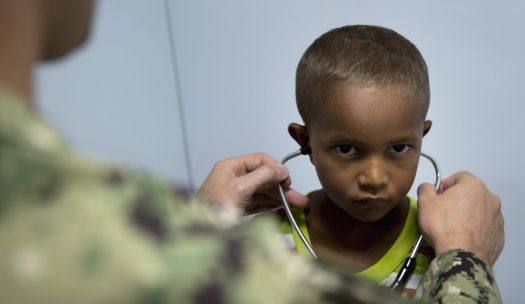by Hedda Meadan, Ph.D.
Going to a doctor appointment can be stressful for many young children and their caregivers. However, for children with autism and their families this can be even more stressful. According to the Centers for Disease Control and Prevention one in every 59 children in the U.S. is diagnosed with autism and a recent study reports the prevalence of autism to be even higher. The primary characteristics of autism – deficits in social-communication skills and restricted behavior – could impact the experience children with autism, their caregivers, and healthcare providers have during a medical appointment.
In a recent literature review Wilson and Peterson (2018) describe both the challenges experienced by children with autism and their families during doctor appointments and facilitators for positive experiences during such visits. The authors state that, “enabling child communication, provider understanding and flexibility, and parental preparedness can help promote positive experiences” (p. 808).
To address possible challenges and ensure successful and productive doctor appointments, caregivers and health care providers need to communicate and collaborate before, during, and after the appointment.
Autism Speaks developed a toolkit titled Autism and Hospital Visits. This toolkit helps prepare the child with autism, the family, and health care providers for doctor appointments and hospital visits. The toolkit includes information and tips for caregivers and health care providers, tools (e.g., parent intake form), visual supports (e.g., pictures, first-then), and social stories.
A few tips for planning for a doctor appointment:
- Schedule the appointment strategically. Request a time of day that is best for the child, a ‘slow’ time for the office, and likely to have the shortest wait time.
- Prepare the child. Talk about the visit, use visuals, read social stories, and engage in pretend/role play.
- Prepare the health care providers. Inform them about the child’s abilities, communication modes and system, needs, likes/dislikes, and special characteristics.
- Plan what items to bring such as communication system, preferred items, comfort items, and items that could help the child in the new environment (e.g., visuals, noise cancelling headphones).
- Remember to praise and reinforce the child before, during, and after the visit.
Image from U.S. Navy photo by Mass Communication Specialist 2nd Class Andrew Brame/Released Public Domain














